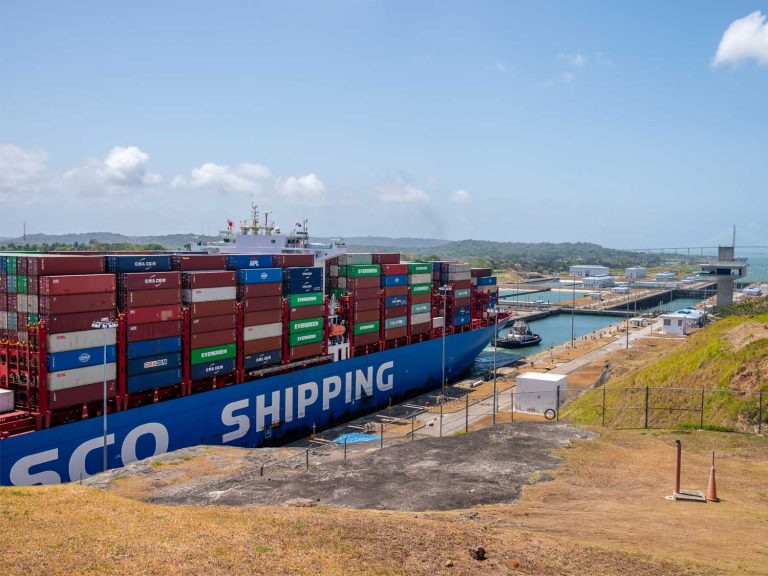
Date:
Panama Canal situation may trigger wider supply chain issues
Following the driest year and October on record, the Panama Canal Authority (ACP) has been steadily cutting daily vessel transit numbers and draught levels across the canal, with some restrictions possibly staying in force until 2028, with wider supply chain ramifications.
With each transit of the Panama Canal consuming a large amount of water, drought has forced the ACP to reduce draught limits on its larger locks by six foot as well as cutting daily transits from 40 to just 18 from February next year.
Container ships sailing from Asia to the U.S. East and Gulf Coast ports typically need more than the current limit of 44 feet of draught when fully loaded.
Down from 50 feet at the beginning this year, the loss of six feet of draught is equivalent to 2,100 teus, which means that vessels sail with fewer containers, or unload containers and rail them across the isthmus for reloading to a vessel on the other side.
Maersk warned shippers to prepare for transit issues at the waterway, but said advanced planning was currently enough to mitigate potential delays, while CMA CGM looks set to become the first major carrier to apply a new Panama Canal surcharge, in response to the ongoing capacity reductions.
The French carrier’s latest customer advisory relayed the issues they faced, but gave no indication what level their surcharge would be set at. Expect other carriers to follow suit.
Limits on transits and draughts, will remain in place at least until after June 2024. However, the ACP says it sees no significant relief until 2028, and that’s if the government of Panama addresses years of underinvestment, stimulating some carriers to question the long-term viability of the waterway.
The Panama Canal’s operating restrictions that were first implemented in July, initially had a limited impact on container shipping operations as carriers had yet to get aggressive in blanking capacity to match weak demand.
However, lighter loadings mean empty holds where 2,100 x 20’ containers should be and is pinching the bottom line of carriers, as inflation is pushing their operating costs up.
Unlike the Panama Canal the Suez Canal has no locks or changing water levels which means it can handle the largest ships all year round – subject to effective piloting, as evidenced by the Ever Given grounding in March 2021.
With the Panama Canal’s ongoing restrictions and the growth in trade to the U.S. East Coast from Southeast Asia and the Indian Subcontinent accelerating, we are likely to see more services diverted or restructured to route through the Suez Canal.
If you have concerns or questions about any of the issues raised in this article, we can review your situation and explain your options, including alternative carriers, ports and routes.
Whatever your challenges, we leverage long-term ocean carrier relationships to deliver cost-effective, resilient and reliable ocean solutions.
EMAIL Andrew Smith, Chief Commercial Officer to learn more.
